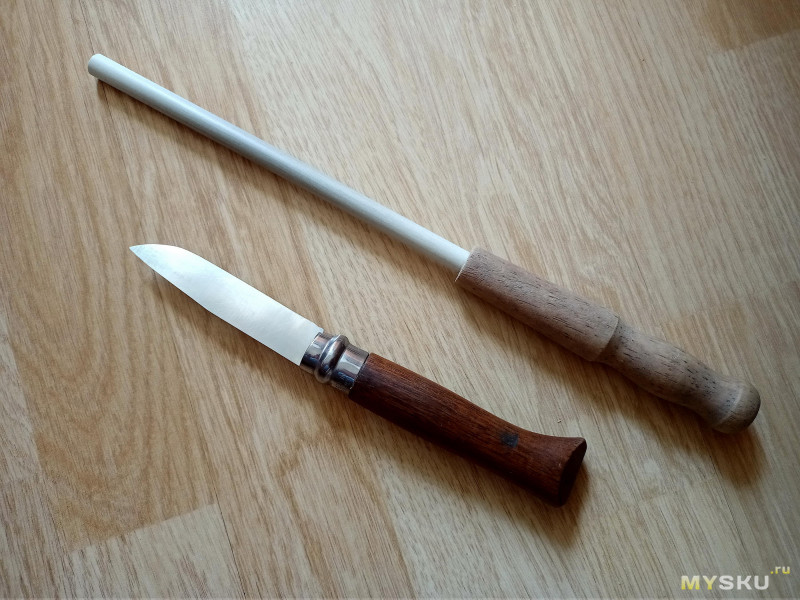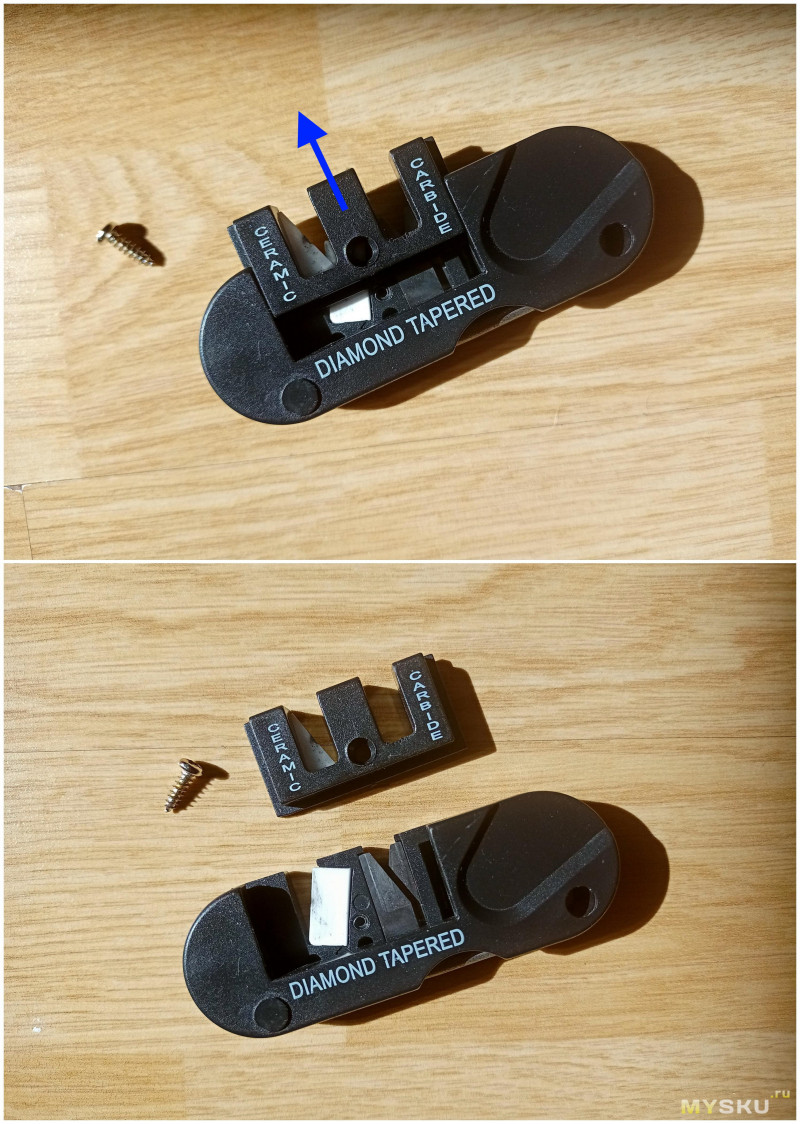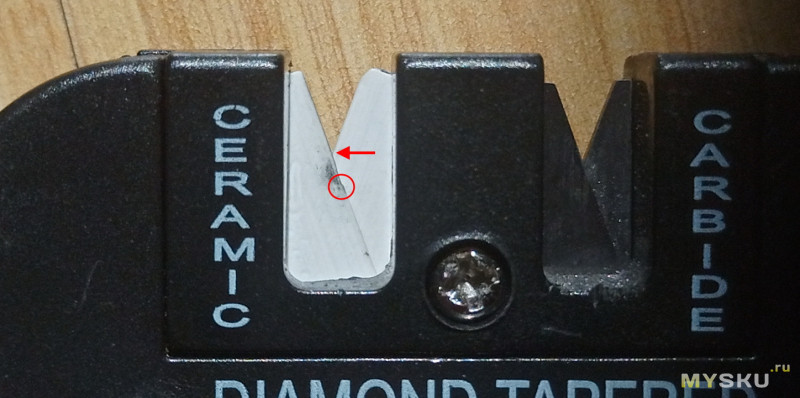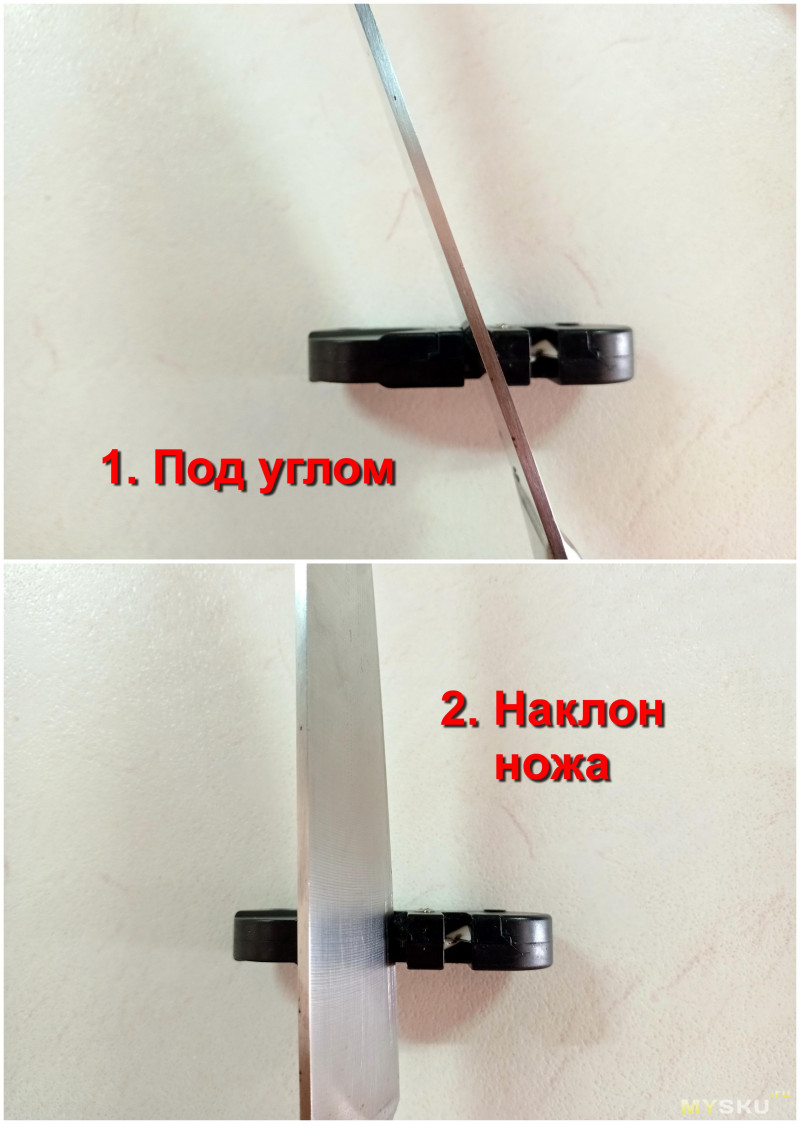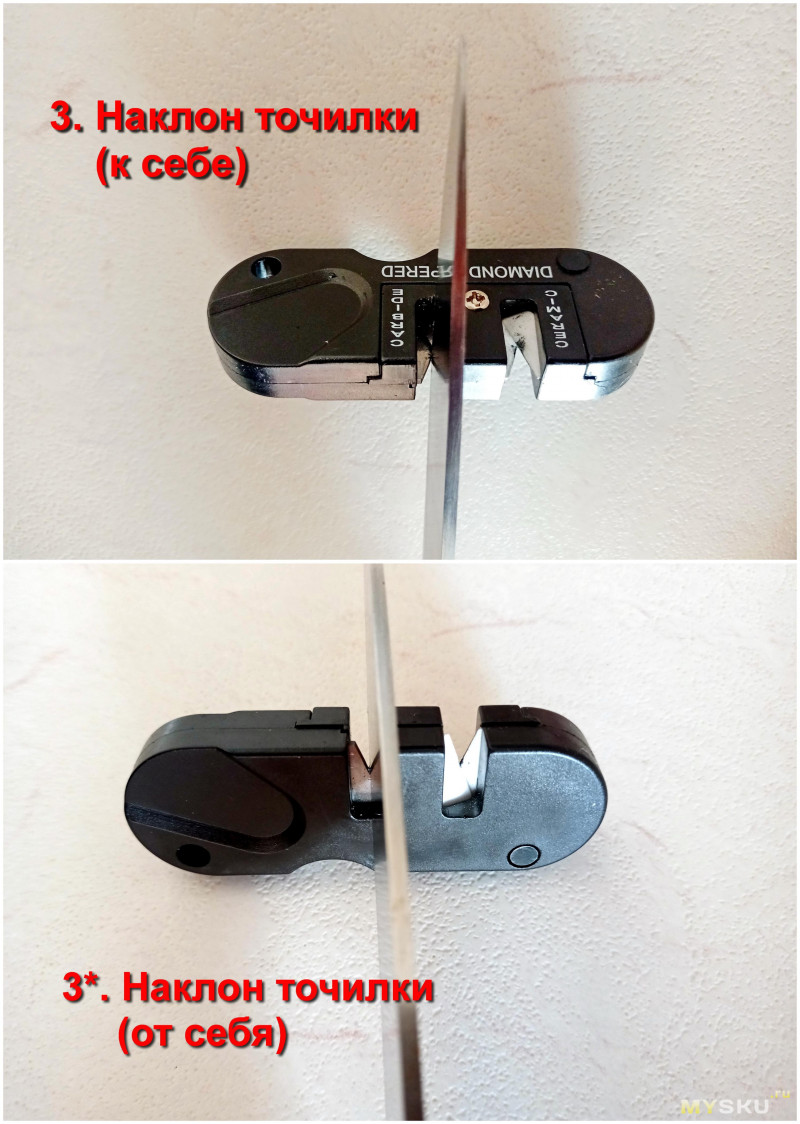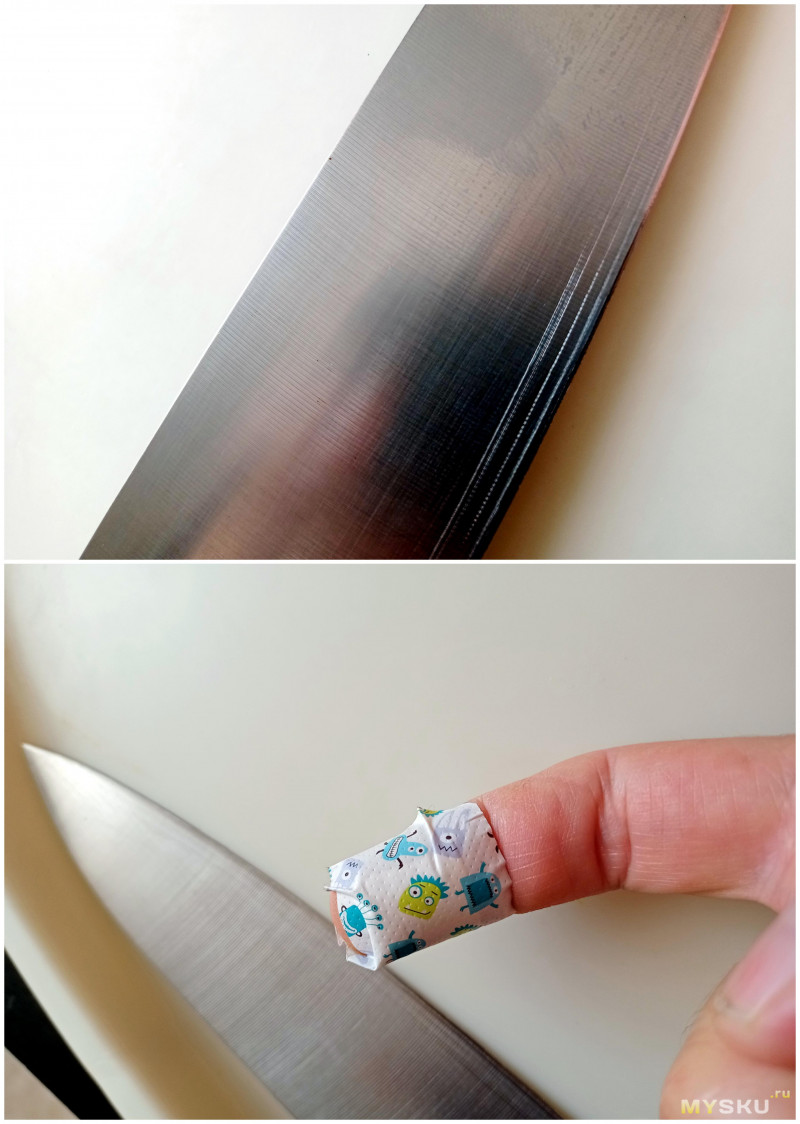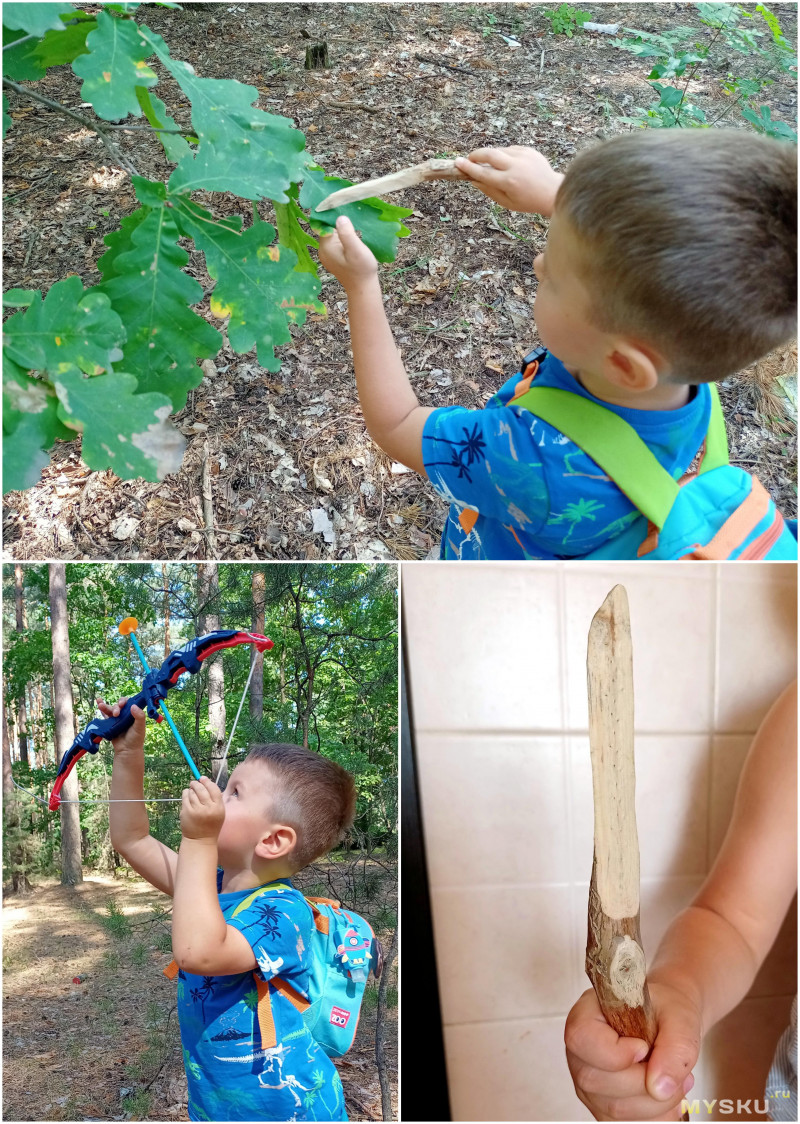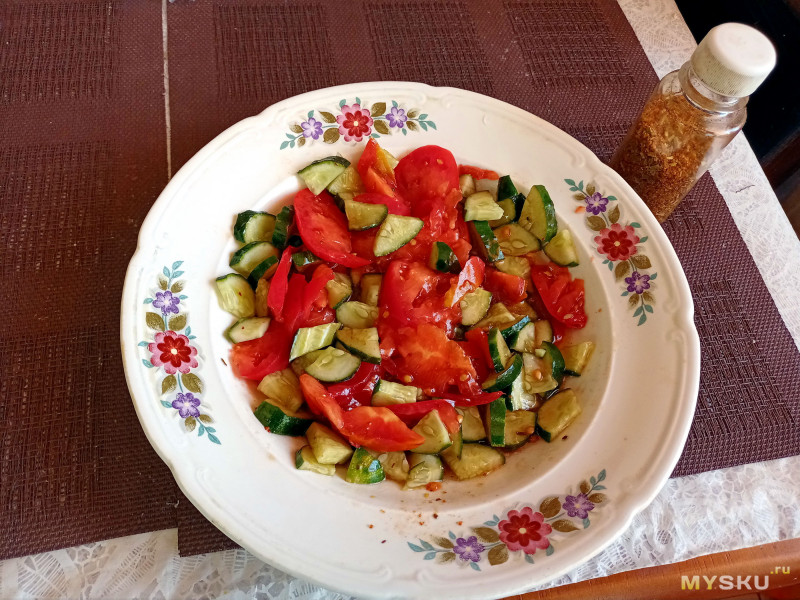Download Article
Download Article
There is nothing more frustrating than trying to chop vegetables for your dinner, only to find that your knife is too dull and is smashing rather than slicing. You can easily remedy this problem by using a manual or electric knife sharpener, and it shouldn’t take you more than several minutes to restore your knife’s sharp edge. If you don’t have a manual or electric sharpener, you could explore using a whetstone, a honing rod, or even sending your knives off to a professional.
-
1
Test your knife by running it through a piece of paper. You may already know that your knife is dull, but if you aren’t sure, fold a piece of newspaper in half (or just use a single sheet of computer paper), hold it up in the air, and bring your knife down to cut through it. If your knife doesn’t slice through the paper, it’s time to sharpen it.[1]
- The knife should continuously cut through the paper without stopping if it is sharp and in good shape.
-
2
Use the “coarse” setting for very blunt knives that need to be reshaped. Most manual sharpeners have at least 2 settings: 1 labeled “coarse,” and 1 labeled “fine.” The coarse setting will actually remove steel from the blade to resharpen the edge, while the fine setting is used for everyday knife maintenance.[2]
- These settings are the same on electrical sharpeners, though an electric sharpener may have an additional slot between “coarse” and “fine.”
Advertisement
-
3
Pull the blade through from its base to its tip 3 to 6 times. Insert the blade into the manual sharpener at the base, which is where the blade meets the handle. Use gentle force, pushing the blade down as you pull it through the slot, toward your body. Repeat this action 3 to 6 times, 3 for a mildly-dull blade, or more for a severely-dull blade.[3]
- This action resets the blade, restoring it to its original sharpness.
- Use enough force when you pull the blade through that you hear an audible grinding sound. If you’re using an electric sharpener, you won’t need to press down—the whirring mechanisms will take care of everything for you.
-
4
Move the blade so you’re following its contour as you pull it through. Each time you bring the knife through the sharpener, you won’t just pull it straight through. Instead, follow the curve of the knife so that the handle comes up and is higher at the end than it was at the beginning. This way, the entirety of the blade will get sharpened.[4]
- If you’re pressing down, you’ll be able to tell by the sound and feel that you’re moving the blade the right way. If you no longer hear the grinding noise or feel the resistance of the blade, you probably aren’t following the contour closely enough.
-
5
Run the blade through the fine setting 1 to 2 times to finish the process. After you’ve finished pulling the blade through the “coarse” setting, you need to give it a few finishing touches to refine its edge. You don’t need to use as much force with the “fine” setting, and the grinding sound won’t be nearly as loud as it was in the “coarse” setting.[5]
- If your sharpener has more than one setting, pass the knife through each in-between setting 1 to 2 times, making sure that you end at the “fine” setting. These additional settings are just gradations of grinding and help fine-tune your knife even more.
-
6
Rinse the knife off and dry it with a lint-free towel. Use warm, soapy water to rinse away any lingering steel remnants before using your knife again.[6]
Feel free to use a sponge or dishtowel to give the knife a quick wipe down. Dry the knife off completely to prevent it from rusting, and return it to its knife block or similar storage space.[7]
- Avoid running your knives through the dishwasher. They can get banged up or damaged by other items.
-
7
Maintain the knife by running it through the “fine” setting daily. The general rule of thumb is to pull your knife through the fine setting once for every 2 hours of use. Depending on how often you cook, you may not need to do this every day, but keep it in mind as a helpful way to keep your knife sharp.[8]
- If you do a daily or semi-weekly pass through the manual sharpener, chances are you won’t need to do much more to keep your knives sharp.
Advertisement
-
1
Invest in an electric sharpener if you cook often with expensive knives. Electric sharpeners themselves are more expensive than manual sharpeners, running about $40 to $100, depending on the brand you get. They’re more intuitive, though, and are really easy to use as they will just pull the blade through for you. It takes less time and effort to sharpen your knives than the other manual methods require.[9]
- Make sure to do your research before ordering your electric sharpener. Some brands are meant for specific kinds of knives, and some include extra features, like a lifetime warranty.
-
2
Buy a pull-through or handheld sharpener for a nice at-home option. This is a really nice choice for your everyday home cook who doesn’t spend more than an hour or 2 in the kitchen every day. They’re smaller than the electric versions, making them easier to store, and they’re fantastic to use for daily touchups or for grinding a dull blade back to sharpness. They cost anywhere from $10 to $60, depending on the brand you choose.[10]
- There’s something to be said for the feeling of manually sharpening your own knife, too. Lots of cooks enjoy the physicality of taking care of their knives and you do get more control over your movements with a manual sharpener than you would with an electric sharpener.
-
3
Opt for a whetstone for a gentle, temperature-controlled sharpener. Whetstones are generally just a small block of material that you’ll run your knife down to sharpen its blade. Always soak it in water for at least 5 to 10 minutes before you use it. Hold the knife at a 22-degree angle and slide it forward down the whetstone, with the blade touching the stone.[11]
Repeat the movement 5 to 10 times to sharpen your knife.[12]
- The cold-water soak keeps your knife from overheating as it’s being sharpened. If a knife gets too hot, it’s chemistry can change and the blade can become brittle and warped.
- Do double-check the instructions before wetting your whetstone. While the majority of them do need to be soaked beforehand, there are a few brands and types of stones that aren’t meant to get wet.
-
4
Use a honing rod to quickly realign the edges of the blade. A honing rod is also often called a sharpening steel, and they often come along with a block-knife set. Honing doesn’t actually remove any steel from the knife and doesn’t technically sharpen it, but it does push out-of-line edges back into place, which in turn makes your cuts sharper and more precise.[13]
It doesn’t require much pressure, and it’s something you can use on a daily basis to keep your blades sharp.[14]
- Don’t use a honing rod in lieu of sharpening your knives with an alternative method from time to time. It can bend the edge over time, making it hazardous to use.
-
5
Take your knives to a professional if you can’t do it yourself at home. It costs about $1.50 to $2.25 per inch to have your knives sharpened by a professional.[15]
Some companies allow you to ship your knives to them if you don’t live nearby (you’ll need to pay the shipping costs, though).[16]
- Check out your warranty! Some knife brands offer free sharpening for life, so that might be something you could take advantage of, too.
Advertisement
Ask a Question
200 characters left
Include your email address to get a message when this question is answered.
Submit
Advertisement
Video
-
While knife sharpeners typically work best for kitchen knives, many can also be used for other blades, including pocket knives and field knives used by hunters and fishermen. For these blades, however, manual knife sharpeners are typically easier to carry and more effective than electric versions.
Advertisement
References
About This Article
Article SummaryX
Before you sharpen a knife with a manual sharpener, try holding up a folded sheet of paper and slicing down through it with the knife. If the knife can’t cut through the paper without stopping, insert it into the “coarse” slot on a manual sharpener. Pull the blade of the knife through the slot 3 to 6 times, following the contour of the blade and moving from base to tip. Next, pull the knife through the “fine” slot once or twice to refine the edge. When you’re done, rinse the knife and dry it with a clean towel before putting it away. For more tips, including how to sharpen knives with an electric sharpener or a whetstone, keep reading!
Did this summary help you?
Thanks to all authors for creating a page that has been read 243,202 times.
Reader Success Stories
-
«I just bought a manual knife sharpener from Amazon. It came in a typical box with color graphics and advertising…» more
Did this article help you?
Описание
чилка для ножей настольная для кухни, универсальный станок для заточки, ножеточка ручная, точило, посуда для пикника. Ручная механическая точилка предназначена для заточки стальных универсальных столовых, поварских, овощных ножей, японских шеф-ножей, сантоку, кухонных топориков и набор кухонных ножей, охотничьих складных ножей, все виды рыбацкого ножа, раскладного туристического ножа бабочки. Аксессуар помогает делать ножи острыми не хуже, чем электрическая заточная машинка. Инвентарь пригодится не только дома, на даче и дачном участке, но также и во время работы или отдыха на природе. Проста в использовании, необходимо лишь поставить лезвие в слот остриём вниз, проведя несколько раз на себя. Корпус имеет удобную эргономичную ручку с удобным хватом рукой, съемный слот заточки, а снизу прорезиненные вставки, не позволяющие прибору скользить по поверхности. Есть 3 слота для разных этапов: грубая, правящая и тонкая заточки. Трехступенчатый подход к обработке полотна позволяет продлить срок сохранения остроты лезвия, что позволит без труда нарезать овощи, фрукты, сыр, капусту, мясо и рыбу. Хранить точило можно в выдвижном ящике, где лежат ложки, вилки, ножи, тогда изделие будет всегда под рукой.
Характеристики
Отзывы
Отзывов еще никто не оставлял
К сожалению, эта скидка больше не активна
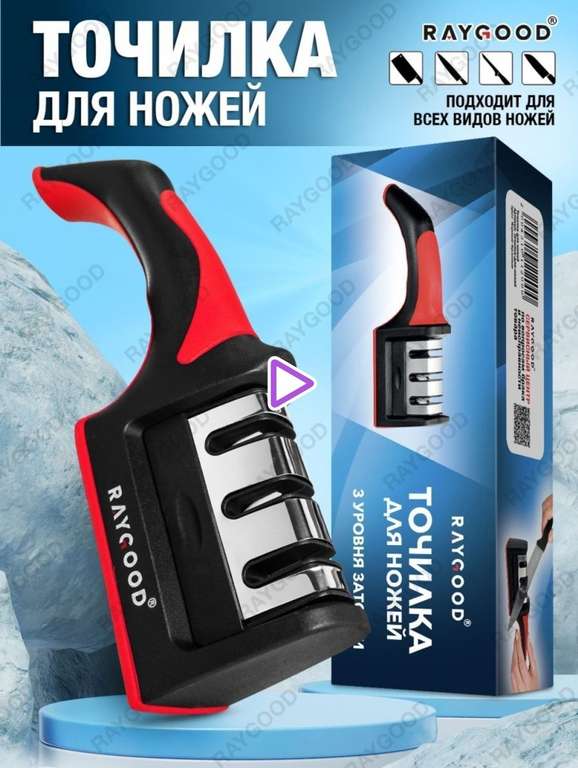
Подробнее о скидке
Пользовательские обновления
Дом и КвартираКухонные приборыПосуда
Сделать еще один небольшой обзор на эту точилку меня вынудило одно обстоятельство. Протяжная точилка типа «ласточкин хвост» — вещь довольно популярная. Но и у нее есть маленькие секреты. Лично для себя я их открыл спустя полгода использования.
Основной обзор под названием «Портативная точилка для ножей. Тот самый вариант, когда «дешево и сердито» разделила
муськовчан
читателей на два лагеря. Первые категорично были против протяжных точилок – мол, эти точилки «убивают» ножи, «съедая» его режущую кромку. Вторые высказались противоположно – когда нужно быстро и легко заточить дешевый кухонный нож, о кромке не думают. А если понадобиться, то таких ножей можно купить «тыщу штук». И не нужно нам рассказывать про систему Apex с балансирами, магнитами и алмазными брусками от 100 до 4000 грид.
В общем, два подхода, два мировоззрения. Уже можно сказать — две религии. Как Linux vs Windows или iOS vs Android. Но я решил опубликовать этот мини-обзор не ради холивара или, как нынче говорят, «поймать хайп». Моя задача – показать некоторые нюансы в использовании протяжной точилки типа «ласточкин хвост».
Да, протяжные точилки «съедают» РК, тут спору нет. Восемь лет назад на Муське был даже обзор «Продольная точилка — радость хозяину, смерть ножу».
Так что, лишить всех домохозяек радости? Запретить протяжные точилки? Нет, давайте к проблеме подходить комплексно. Скажем так, смотреть на проблему «гибче и ширше». Что мешает воспользоваться один раз протяжной ножеточкой, а затем несколько раз пройтись мусатом или более щадящими керамическими вставками. Благо на обозреваемой точилке имеется «ласточкин хвост» из керамики.
Более того, некоторые ножи вообще плохо переносят протяжные ножеточки. Например, у ножей Opinel геометрия клинка близка к «линзе». Попав в «ласточкин хвост» Opinel №8 теряет свою РК намного быстрее, чем какой-либо кухонник, у которого прямые спуски или клин. Поэтому эти «французские складники» желательно править и подтачивать на керамике. Уж, больно они деликатные!
Но вернемся к герою нашего обзора. Спустя полгода я решил разобрать его и внимательно осмотреть. А также показать несколько интересных моментов по заточке кухонных ножей на инструменте «ласточкин хвост» Carbide.
Неполная разборка
автомата АКМ
точилки выполняется весьма просто: выкручиваете центральный винт и сдвигаете вверх блок с надписями CERAMIC и CARBIDE (синяя стрелка). Открывается доступ к двум рабочим «хвостам» — из карбида вольфрама и керамики.
Сразу обратил внимание на состояние винта. Винт абсолютно чистый, ржавчины как таковой не наблюдается. Перед заточкой ножей я смачиваю водой и смазываю клинок моющим гелем, а после промываю точилку под струей воды и протираю салфеткой.
На лезвиях «ласточкиного хвоста» из карбида вольфрама износа и затупления нет. Никакого намека! А на керамике заметен небольшой скол и выработка. Хотя я пользуюсь заточкой на CARBIDE гораздо чаще, чем на CERAMIC. Но можно исправить керамический инструмент – достаточно поменять два элемента местами. Извлекать их нужно аккуратно, они посажены на клей. Перед этим карандашом подпишите их (например, 1 и 2). Обратите внимание, что посадочные торцы керамики имеют «бортики». Видимо, для удержания клея.
Если клей мешает можно его соскоблить. Я не стал клеить по-новому, просто поменял местами керамические элементы. На фото заметно, что выработка на керамике (в красном кольце) теперь находится ниже рабочей точки инструмента CERAMIC (красная стрелка). Собираем точилку в обратном порядке. Для защиты винта от будущей коррозии я смазал его резьбу «Литолом» (ЛИТОЛ-24).
А теперь переходим к нюансам заточки на инструменте CARBIDE. Может случиться, что слишком тупой кухонник будет на этом инструменте вести себя, как кусок мыла. Как бы вы не нажимали или с каким бы усилием не тянули. Так случилось с ножами моей дочери. Она попросила два дня посидеть с внуком. Ну, а пока внук отдыхал после сытного обеда, дед провел ревизию на кухне (остры ли ножи) и в инструментах зятя (заряжен ли шуруповерт, заточены ли сверла и т.д.). Оказалось, ножи не заточены. Благо всегда со мной компактная точилка!
Самое интересное, что самый маленький нож их этого кухонного арсенала я «лечил» на электроточиле «Энергомаш ТС-6010С» несколько лет назад. Осталось даже видео.
Итак, если кухонный нож тупой, а протяжная точилка его «не берет», то используем три варианта (способа) заточки.
ВАРИАНТ №1 – поворачиваем нож. Попросту меняем угол протяжки. Пробуем вариант, как слева, так и справа.
ВАРИАНТ №2 – наклоняем нож. Пробуем наклон влево и наклон вправо. И снова тянем нож.
Задача – почувствовать как «ласточкин хвост» вцепился в металл и начинает снимать РК. Если варианты №1 и №2 не помогают, то есть третий.
ВАРИАНТ №3 – наклоняем точилку. Либо «на себя», либо «от себя». Как показала практика, все три варианта превосходно работают. Не исключена их комбинация. Повторюсь, главное – поймать момент зацепления. Но только без фанатизма ©
Последнее правило тоже важно. Ибо можно порезаться. Что собственно, со мной и произошло ) Пришлось израсходовать детский лейкопластырь. Один недостаток такого способа – при смене угла, направления или наклона тело клинка около режущей кромки неизбежно получит царапины. Однако, на дешевых кухонниках этим можно пренебречь.
Во время заточки внук был рядом и загорелся желанием заиметь свой нож. Его желание было выполнено. Счастью ребенка не было предела! Для тестирования детского «клинка из сосны» мы отправились в ближайший лесок. Заодно и белок пострелять.
На этом у меня все.
Всем удачи и бобра! ©
PS … Простой рецепт летнего салата. Острым ножом нарезаем помидоры и огурцы, добавляем соль и приправу из смеси перцев, заливаем подсолнечным маслом и можно немного соевого соуса. Отлично тонизирует и «взбодряет десна» ©.
Летний салат













